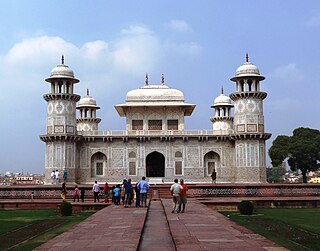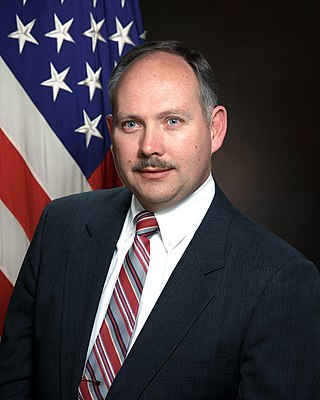Charles Graves
Charles Graves enlisted in the United States Army on August 16, 1917; he was eighteen years old at the time. He was eventually shipped to Neuroy, France. On October 5, 1918, fourteen months after his Army service began, Graves was killed by German artillery shrapnel on the Hindenburg Line. Soon after, he received full military honors and a military burial in France.
Four years after his death, Grave's mother claimed her son's body when it arrived on a troopship called the Cambria on March 29, 1922. The U.S. Government had the idea of creating the Tomb of the Unknown Soldier and of a "Known Soldier" in Arlington National Cemetery to honor World War I soldiers. Graves was chosen for "America's Known Soldier" by a blindfolded sailor who picked Graves' name from an American soldier remains list, but his mother objected to his burial at Arlington. The War Department wanted to give his body, in its flag-draped coffin, a parade on Fifth Avenue in New York with generals, admirals, and politicians before his mother buried Graves in the cemetery near Antioch Church on April 6, 1922.

A Tomb of the Unknown Soldier or Tomb of the Unknown Warrior is a monument dedicated to the services of an unknown soldier and to the common memories of all soldiers killed in war. Such tombs can be found in many nations and are usually high-profile national monuments. Throughout history, many soldiers have died in war with their remains being unidentified. Following World War I, a movement arose to commemorate these soldiers with a single tomb, containing the body of one such unidentified soldier.

The Tomb of the Unknown Soldier is a historic monument dedicated to deceased U.S. service members whose remains have not been identified. It is located in Arlington National Cemetery in Virginia, United States. The World War I "Unknown" is a recipient of the Medal of Honor, the Victoria Cross, and several other foreign nations' highest service awards. The U.S. Unknowns who were interred are also recipients of the Medal of Honor, presented by U.S. presidents who presided over their funerals. The monument has no officially designated name.

A tomb is a repository for the remains of the dead. It is generally any structurally enclosed interment space or burial chamber, of varying sizes. Placing a corpse into a tomb can be called immurement, although this word mainly means entombing people alive, and is a method of final disposition, as an alternative to cremation or burial.

Arlington National Cemetery is one of two national cemeteries run by the United States Army. Nearly 400,000 people are buried in its 639 acres in Arlington, Virginia. There are about 30 funerals conducted on weekdays and 7 held on Saturday. The other Army cemetery is in Washington, D.C. and is called the U.S. Soldiers' and Airmen's Home National Cemetery. All other national cemeteries are run by the National Cemetery System of the Department of Veterans Affairs.

The John F. Kennedy Eternal Flame is a presidential memorial at the gravesite of assassinated United States President John F. Kennedy, in Arlington National Cemetery in Virginia. This permanent site replaced a temporary grave and eternal flame used at the time of Kennedy's state funeral on November 25, 1963, three days after his assassination. The site was designed by architect John Carl Warnecke, a long-time friend of Kennedy. The permanent John F. Kennedy Eternal Flame grave site was consecrated and opened to the public on March 15, 1967.

Old Chapel Hill Cemetery is a graveyard and national historic district located on the campus of the University of North Carolina at Chapel Hill in Chapel Hill, North Carolina.

The Kremlin Wall Necropolis was the national cemetery for the Soviet Union. Burials in the Kremlin Wall Necropolis in Moscow began in November 1917, when 240 pro-Bolshevik individuals who died during the Moscow Bolshevik Uprising were buried in mass graves at Red Square. The improvised burial site gradually transformed into the centerpiece of military and civilian honor during the Second World War. It is centered on both sides of Lenin's Mausoleum, initially built in wood in 1924 and rebuilt in granite in 1929–1930. After the last mass burial there in 1921, funerals in Red Square were usually conducted as state ceremonies and reserved as the final honor for highly venerated politicians, military leaders, cosmonauts, and scientists. In 1925–1927, burials in the ground were stopped; funerals were now conducted as burials of cremated ash in the Kremlin wall itself. Burials in the ground resumed with Mikhail Kalinin's funeral in 1946.

After Abraham Lincoln was assassinated on April 14, 1865, a three-week series of events was held to mourn the death and memorialize the life of the 16th president of the United States. Funeral services, a procession, and a lying in state were first held in Washington, D.C., then a funeral train transported Lincoln's remains 1,654 miles (2,662 km) through seven states for burial in Springfield, Illinois. Never exceeding 20 mph, the train made several stops in principal cities and state capitals for processions, orations, and additional lyings in state. Millions of Americans viewed the train along the route and participated in associated ceremonies.

Crown Hill Cemetery is a historic rural cemetery located at 700 West 38th Street in Indianapolis, Marion County, Indiana. The privately owned cemetery was established in 1863 at Strawberry Hill, whose summit was renamed "The Crown", a high point overlooking Indianapolis. It is approximately 2.8 miles (4.5 km) northwest of the city's center. Crown Hill was dedicated on June 1, 1864, and encompasses 555 acres (225 ha), making it the third largest non-governmental cemetery in the United States. Its grounds are based on the landscape designs of Pittsburgh landscape architect and cemetery superintendent John Chislett Sr and Prussian horticulturalist Adolph Strauch. In 1866, the U.S. government authorized a U.S. National Cemetery for Indianapolis. The 1.4-acre (0.57 ha) Crown Hill National Cemetery is located in Sections 9 and 10.

Zachary Taylor National Cemetery is a United States National Cemetery located at 4701 Brownsboro Road (US-42), in Louisville, Kentucky. It is named for Zachary Taylor, the 12th president of the United States, who is buried there with his wife, Margaret Mackall Smith Taylor. Zachary Taylor National Cemetery was listed in the National Register of Historic Places on November 3, 1983. As of 2014, the cemetery has over 14,000 interments and is one of seven national cemeteries in the Commonwealth of Kentucky, and one of 112 in the United States. Those buried at the national cemetery served in six wars: Spanish–American War, World War I, World War II, Korean War, Vietnam War, and the Persian Gulf War.

Oak Woods Cemetery is a large lawn cemetery in Chicago, Illinois. Located at 1035 E. 67th Street, in the Greater Grand Crossing area of Chicago's South Side. Established 170 years ago on February 12, 1853, it covers 183 acres (74 ha).

Flower Hill Cemetery is located in North Bergen, New Jersey. It is cojoined with Hoboken Cemetery and Machpelah Cemetery.

Crown Hill National Cemetery is a U.S. National Cemetery located in Indianapolis, Marion County, Indiana. It was established in 1866 on Section 10 within Crown Hill Cemetery, a privately owned cemetery on the city's northwest side. Administered by the United States Department of Veterans Affairs, the National Cemetery encompasses 1.4 acres (0.57 ha) and serves as a burial site for Union soldiers who fought in the American Civil War.

Westview Cemetery, located in Atlanta, Georgia, is the largest civilian cemetery in the Southeastern United States, comprising more than 582 acres (2.36 km2), 50 percent of which is undeveloped. Westview includes the graves of more than 125,000 people, and was added to the Georgia Register of Historic Places in 2019 and the National Register of Historic Places in 2020.

John C. Metzler Jr. is an American civil servant who was Superintendent of Arlington National Cemetery in Arlington, Virginia, from 1991 to 2010. He achieved notoriety in the press at the end of his tenure due to the Arlington National Cemetery mismanagement controversy.

Ernest Moore Viquesney was an American sculptor best known for his popular World War I monument Spirit of the American Doughboy.

Myrtle Hill Cemetery is the second oldest cemetery in the city of Rome, Georgia. The cemetery is at the confluence of the Etowah River and Oostanaula River and to the south of downtown Rome across the South Broad Street bridge.

The English coastal city of Brighton and Hove, made up of the formerly separate Boroughs of Brighton and Hove in East Sussex, has a wide range of cemeteries throughout its urban area. Many were established in the mid-19th century, a time in which the Victorian "cult of death" encouraged extravagant, expensive memorials set in carefully cultivated landscapes which were even recommended as tourist attractions. Some of the largest, such as the Extra Mural Cemetery and the Brighton and Preston Cemetery, were set in particularly impressive natural landscapes. Brighton and Hove City Council, the local authority responsible for public services in the city, manages seven cemeteries, one of which also has the city's main crematorium. An eighth cemetery and a second crematorium are owned by a private company. Many cemeteries are full and no longer accept new burials. The council maintains administrative offices and a mortuary at the Woodvale Cemetery, and employs a coroner and support staff.

The Presbyterian Burying Ground, also known as the Old Presbyterian Burying Ground, was a historic cemetery which existed between 1802 and 1909 in the Georgetown neighborhood of Washington, D.C., in the United States. It was one of the most prominent cemeteries in the city until the 1860s. Burials there tapered significantly after Oak Hill Cemetery was founded nearby in 1848. The Presbyterian Burying Ground closed to new burials in 1887, and about 500 to 700 bodies were disinterred after 1891 when an attempt was made to demolish the cemetery and use the land for housing. The remaining graves fell into extensive disrepair. After a decade of effort, the District of Columbia purchased the cemetery in 1909 and built Volta Park there, leaving nearly 2,000 bodies buried at the site. Occasional human remains and tombstones have been discovered at the park since its construction. A number of figures important in the early history of Georgetown and Washington, D.C., military figures, politicians, merchants, and others were buried at Presbyterian Burying Ground.

New Calton Burial Ground is a burial ground in Edinburgh. It was built as an overspill and functional replacement to Old Calton Burial Ground and lies half a mile to its east on Regent Road in Edinburgh, Scotland, on the south-east slopes of Calton Hill. On its southern edge it attaches to the north-east edge of the Canongate in the Old Town. It lies on a fairly steep south-facing slope with views to Holyrood Palace, the Scottish Parliament Building and Arthur’s Seat.




















